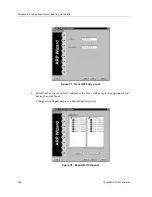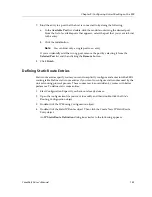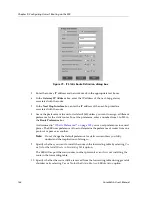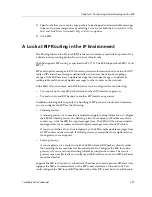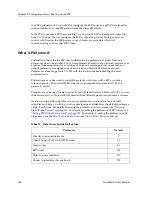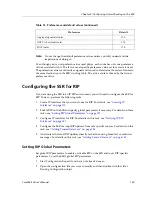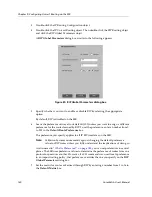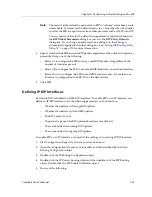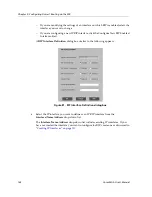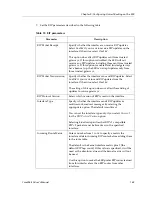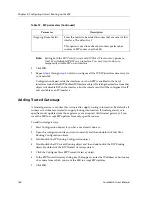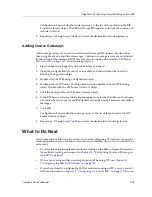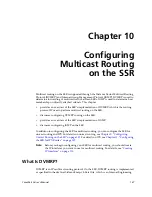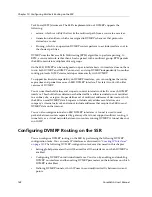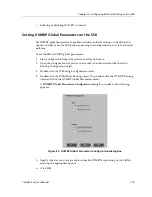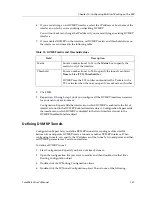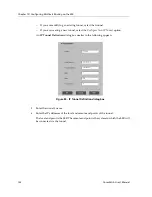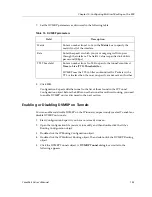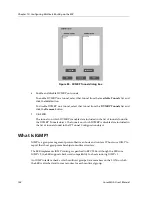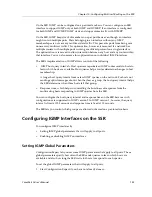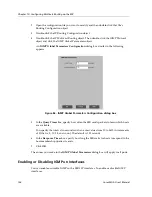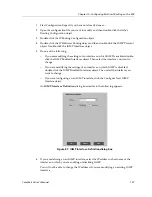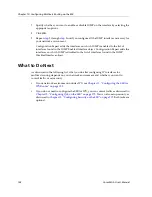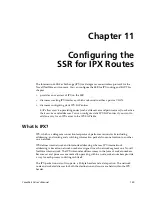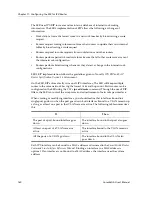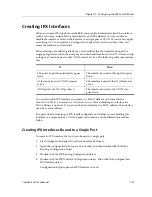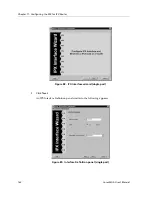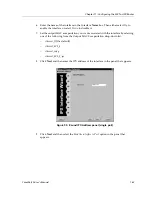
Chapter 10: Configuring Multicast Routing on the SSR
148
CoreWatch User’s Manual
Task Force (IETF) document. The SSR’s implementation of DVMRP supports the
following:
•
mtrace, which is a utility that tracks the multicast path from a source to a receiver.
•
Generation identifiers, which are assigned to DVMRP whenever that protocol is
started on a router.
•
Pruning, which is an operation DVMRP routers perform to exclude interfaces not in
the shortest path tree.
DVMRP uses the Reverse Path Multicasting (RPM) algorithm to perform pruning. In
RPM, a source network rather than a host is paired with a multicast group. RPM permits
the SSR to maintain multiple multicast groups.
On the SSR, DVMRP can be configured on a per interface basis. An interface does not have
to run both DVMRP and IGMP. You can start and stop DVMRP independently from other
routing protocols. IGMP starts and stops automatically with DVMRP.
To support backward compatibility on DVMRP interfaces, you can configure the router
expire time and prune time on each SSR DVMRP interface. This lets it work with older
versions of DVMRP.
You can use threshold values and scopes to control internetwork traffic on each DVMRP
interface. Threshold values determine whether traffic is either restricted or not restricted
to a subnet, site, or region. Scopes define a set of multicast addresses of devices to which
the SSR can send DVMRP data. Scopes can include only addresses of devices on a
company’s internal network and cannot include addresses that require the SSR to send
DVMRP data on the internet.
You can also configure tunnels on SSR DVMRP interfaces. A tunnel is used to send
packets between routers separated by gateways that do not support multicast routing. A
tunnel acts as a virtual network between two routers running DVMRP. A tunnel does not
run IGMP.
Configuring DVMRP Routing on the SSR
You can configure DVMRP routing on the SSR by performing the following DVMRP-
configuration tasks. You can create IP interfaces as discussed in
“Creating IP Interfaces”
on page 110
. The following DVMRP-configuration tasks are discussed in this chapter:
•
Setting global parameters that will be used for all the interfaces on which DVMRP is
enabled.
•
Configuring DVMRP on individual interfaces. You do so by enabling and disabling
DVMRP on interfaces and then setting DVMRP parameters on the interfaces on which
DVMRP is disabled.
•
Defining DVMRP tunnels, which IP uses to send multicast traffic between two end
points.
Summary of Contents for CoreWatch
Page 1: ...CoreWatch User s Manual 9032564 04...
Page 2: ...Notice 2 CoreWatch User s Manual...
Page 20: ...Preface 20 CoreWatch User s Manual...
Page 64: ...Chapter 5 Changing System Settings 64 CoreWatch User s Manual...
Page 86: ...Chapter 6 Configuring SSR Bridging 86 CoreWatch User s Manual...
Page 106: ...Chapter 7 Configuring VLANs on the SSR 106 CoreWatch User s Manual...
Page 206: ...Chapter 12 Configuring QoS on the SSR 206 CoreWatch User s Manual...
Page 246: ...Chapter 13 Configuring Security on the SSR 246 CoreWatch User s Manual...
Page 363: ...CoreWatch User s Manual 363 Chapter 16 Configuring Routing Policies on the SSR 9 Click OK...
Page 364: ...Chapter 16 Configuring Routing Policies on the SSR 364 CoreWatch User s Manual...
Page 370: ...Chapter 17 Checking System Status 370 CoreWatch User s Manual...
Page 390: ...Chapter 18 Monitoring Real Time Performance 390 CoreWatch User s Manual...
Page 396: ...Chapter 19 Checking the Status of Bridge Tables 396 CoreWatch User s Manual...
Page 430: ...Chapter 20 Checking the Status of Routing Tables 430 CoreWatch User s Manual...
Page 442: ...Chapter 22 Obtaining Reports 442 CoreWatch User s Manual...
Page 456: ...Appendix B CoreWatch Menus 456 CoreWatch User s Manual...

